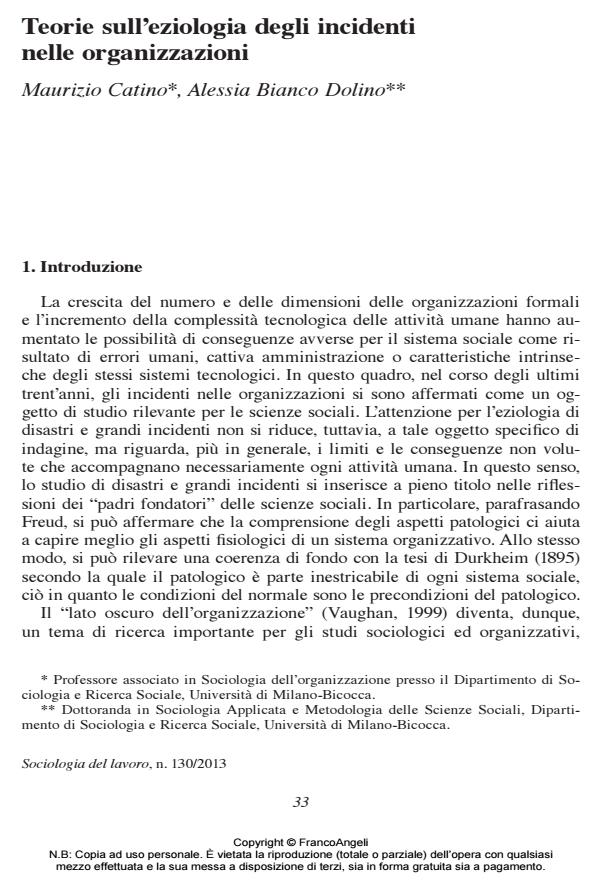Theories on the etiology of accidents in organizations
Journal title SOCIOLOGIA DEL LAVORO
Author/s Maurizio Catino, Dolino Alessia Bianco
Publishing Year 2013 Issue 2013/130
Language Italian Pages 19 P. 33-51 File size 639 KB
DOI 10.3280/SL2013-130003
DOI is like a bar code for intellectual property: to have more infomation
click here
Below, you can see the article first page
If you want to buy this article in PDF format, you can do it, following the instructions to buy download credits

FrancoAngeli is member of Publishers International Linking Association, Inc (PILA), a not-for-profit association which run the CrossRef service enabling links to and from online scholarly content.
The article presents the main theoretical contributions regarding the etiology of organizational accidents: (1) the normal accident theory, linking accident genesis to the structural properties of certain organizational systems; (2) the organizational accident theory, highlighting the role of pathogen organizational factors as possible contributors to errors and violations; (3) the epistemic accident theory, stressing the importance of adopting erroneous techno-scientific assumptions even if they seemed valid before the accident occurred. After having presented the key characteristics of these theories, the article introduces an analytical comparison between the different approaches aiming to highlight the theoretical and practical implications of the three theories. Finally, the authors introduce a multi-level analytical model (micro-meso-macro) to the study of organizational accidents and the improvement of safety standards.
Keywords: Organizational accident, normal accident, epistemic accident, human error, safety, organizational reliability
Maurizio Catino, Dolino Alessia Bianco, Teorie sull’eziologia degli incidenti nelle organizzazioni in "SOCIOLOGIA DEL LAVORO " 130/2013, pp 33-51, DOI: 10.3280/SL2013-130003